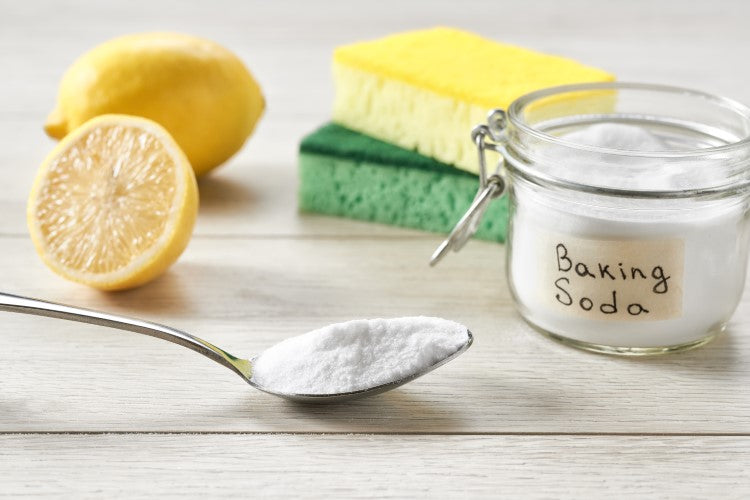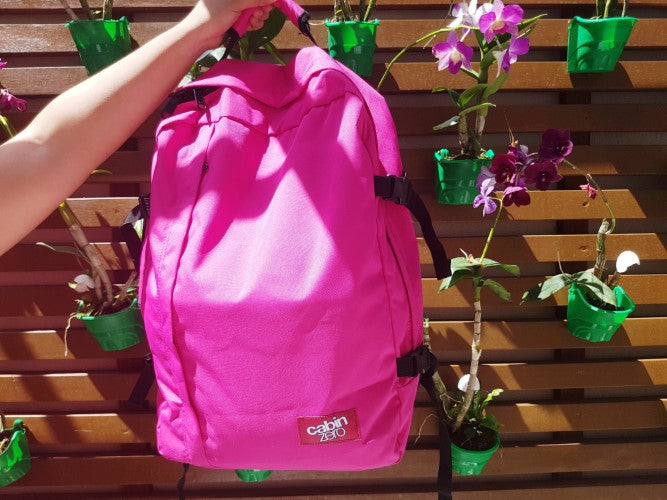CONTENTS
The Ultimate Guide on How to Wash Your Bags and Keep Your Backpacks Brand-new
Table of Contents
- How To Wash, Maintain And Keep Your Bags Brand-new
- Step 1: Check the care labels carefully before washing
- Step 2: Remove all objects from the backpack before washing
- Step 3: Choose the right detergent
- Step 4: Start washing the bag
- Step 5: Dry the bag after washing
- Step 6: Store and maintain the bag after washing
Nowadays, people's demand for bags and backpacks is growing by the day. They are used by most individuals of all ages for a variety of functions and needs, including going to school, walking, traveling, storing equipment, and working. And the life of the backpack depends on how you maintain and clean them. Do you know how to do it?
How To Wash, Maintain And Keep Your Bags Brand-new
Step 1: Check the care labels carefully before washing
Each backpack will have a different care label depending on the materials made and features. In order to get the appropriate way to wash your backpack and avoid damage, don’t forget to check the backpack's care label. Always follow the backpack's care instructions label to ensure that you're not damaging it when you wash it.
 |
 |
If there isn't a label, test the fabric with roughly a quarter teaspoon of detergent in a less apparent area first to avoid fading or damage. Care labels are normally found along a side seam, most likely in the main zipper compartment inside the backpack.
A backpack’s care labels normally provide instructions for cleaning and drying the bag to preserve its longevity.
You should take note of any typical notes on the backpack's care label, such as not washable in washing machines or not suitable with bleach or dryer, so that when washing the backpacks, you can avoid those things.
Laundry symbol meaning
Washing

Bleaching

Drying
Tumble drying

Natural drying

Ironing

Professional cleaning
Chemical cleaning

Wet cleaning

Step 2: Remove all objects from the backpack before washing
It is necessary to remove all the items in the backpack before washing because those objects might fade and stick to the bag's surface, causing damage to your bag.
First, we empty every pocket, open every compartment and leave the pockets unzipped.
Then we brush off dirt and buildup on the outside of the bag and shake it off to remove any dirt or crumbs. You can also use a vacuum attachment to clean the seams on the inside and outside.
All metal frames, removable straps, side compression straps, chest belts and hip belts should be removed.
Next, we cut away any loose threads or frayed fibres near the zipping areas. This makes sure that your backpack is totally clean, you will have a backpack free of snagged and stuck zippers.

Step 3: Choose the right detergent

Add a gentle amount of detergent to the water. The detergent that you use must be a gentle detergent that is free of dyes, fragrances, and chemicals, because harsh chemicals can harm the fabric of your backpack (by reducing the effectiveness of the waterproofing layers on the bag fabric), and scents and colours can irritate your skin.
100% nylon/polyester fabric has the characteristic of being difficult to fade, but you should also not choose a detergent that is too strong. As for other types of fabric backpacks, you need to choose gentle detergents such as specialized Woolite bleach for fabrics. And you should only use it in moderation!
Don't worry if you come across stains on the surface of your bag when cleaning it, such as moulds or greasy food. You simply need to use the following 4 options to get rid of them:
-
The first option: green tea essential oil.
All you need is a clean white cloth dipped in green tea solution, then you wipe it down with this towel over and over until the dirt is gone. Finally, give it a good rinse with cold water and set it aside to dry.

-
The second option is to use vinegar
-
The third option: alcohol solution
Also known as diluted alcohol, this is an efficient bleach for destroying moulds and bacteria, just like the above detergents, you need to use a clean cotton towel. After that, soak the towel in alcohol. Then, using this alcohol-soaked towel, wipe away all the moulds stains. Finally, wash and dry the backpack with clean water.
-
Fourth option: baking soda

First, you need to sprinkle baking soda on the moulds stains, wait for a few minutes, then use a cotton cloth to wipe it off. After that, the backpack should then be washed and dried with clean water. As a result, the moulds have been eliminated.
Step 4: Start washing the bag

SPOT CLEAN (HAND WASH ONLY)
|
Important Notes
|
- Identify the stain: The type of stain will determine the best cleaning method. Locate the stain and determine its type (e.g., oil, ink, food).
-
Choose the right cleaning solution:
- Grease or oil stains: Use a mild detergent or a commercial degreaser.
- Food stains: A mixture of warm water and mild detergent is often effective.
- Ink stains: Try a rubbing alcohol solution.
- Wine stains: Use a mixture of white vinegar and water.
- Apply the solution: Gently scrub the fabric with a clean cloth, a soft toothbrush or a sponge that you no longer use.
- Blot excess liquid: Use a clean, dry cloth to blot up any excess liquid.
- Rinse: If necessary, rinse the area with cool water.
- Allow to dry: Let the fabric air dry completely before wearing or storing.
Additional Tips:
- For stubborn stains: If the stain persists, try a commercial stain remover specifically designed for nylon or polyester.
- Avoid heat: Excessive heat can set stains. Dry the fabric in the shade or on a low heat setting.
- For severe stains: Consider taking the item to a professional dry cleaner.
Step 5: Dry the bag after washing
Remove the water by rinsing it to dry.
If you have the habit of using a dryer to dry your clothes, be aware that some types of fabric can be used with a dryer while some others cannot.

IG: @estemariee
Backpacks made of nylon fabric can be dried directly in the sun, because nylon cloth does not lose its characteristics when exposed to the sun. Furthermore, this fabric can withstand high temperatures (160 degrees), a nylon backpack can be dried with a dryer.
You should not use a dryer to dry backpacks made of cotton, non-woven, or lined textiles since the heat of the dryer will alter the fibres. Moreover, these textiles do not hold up well when exposed to the sun during periods of intense heat.
After washing these backpacks, hang them to dry in a cool and dry area. In addition, when leaving the backpack to dry, make sure you turn it upside down and open all the compartments. Then hang it up by hooking it to the bag strap.
STEP 6: Store and maintain the bag after washing
In order that the bag to be durable and mold-free, it must be properly maintained.
The most effective ways to keep the bag in good condition.
-
Sun exposure to deodorize.
On average, about every 1 month, we should dry it in the sun once for about 2 hours to keep bags clear and clean (do not expose to strong sunlight, the time should be between 7 a.m. and 9 a.m. or 3 p.m. until 5 p.m.

-
Avoid places with high temperature and humidity.
Although today's bags and backpacks are usually composed of smart materials that are waterproof and heat - resistant. However, we should not leave our backpacks and bags in a place with hot temperatures and high humidity because they will be affected in the long term. We should leave the bags in a place with temperature >10 degrees and <40 degrees.
-
Always bring a raincoat/rain cover
Although many backpacks now have a specialised rain cover attached, it is recommended to bring a rain cover to avoid the rain and protect your backpack well.
If you accidentally get caught in the rain and your backpack gets wet, you should always dry it to avoid moulds.
-
Do not use sharp or pointed objects in the bag
Even though backpacks and bags are made of smart materials, they will be damaged if they clash with sharp items.
-
Do not overload your bag
Each backpack, bag is designed specifically and has a limit for it, if you try to exceed it, it will seriously affect the quality of the backpack. This will also not be good for your health as well as not guarantee the absolute safety of the camera, the lens you bring.
To summarize, while washing backpacks, you should follow all the above procedures and have a practical way to store them afterwards to ensure that your backpack remains durable, clean, and mould-free.
Good luck with the bag washing and make it stay brand-new!





Hinterlasse einen Kommentar